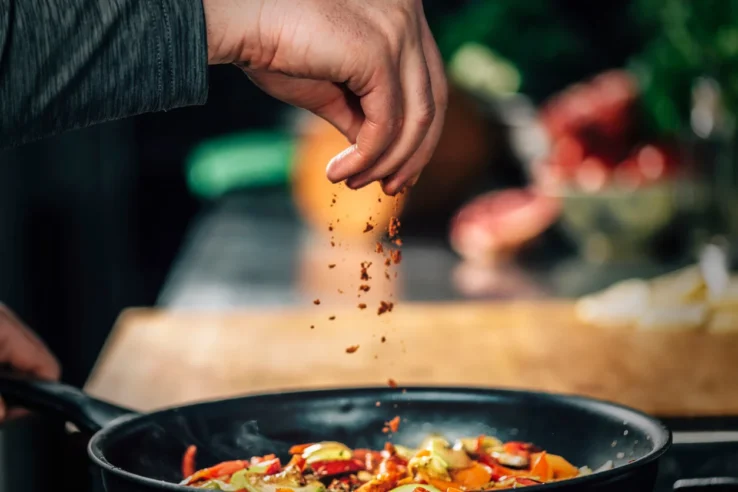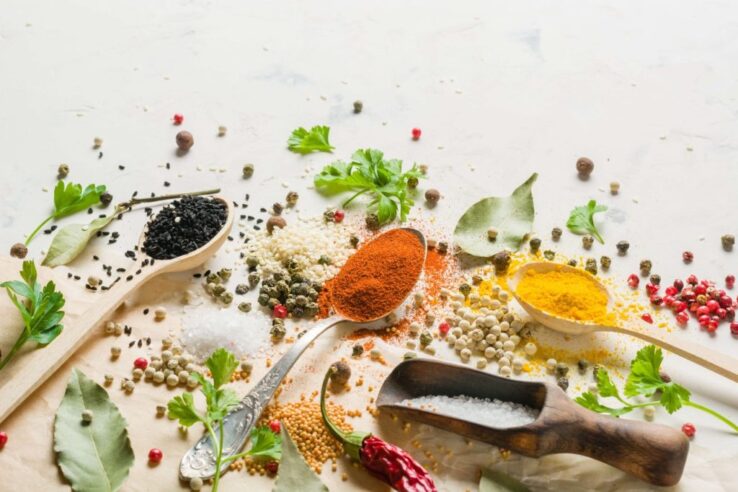When it comes to adding flavor to our meals, herbs, and spices play a vital role. They not only add depth to the taste but also have numerous health benefits. While many of us rely on store-bought herbs and spices, there’s something unique about using wild-harvested ones. Wild-crafted herbs are herbs that are gathered from their natural habitat, unlike their cultivated counterparts. They are often more potent and flavorful than the herbs we buy from the store.
Using wild-harvested herbs and spices in everyday cooking can be a great way to add a unique touch to your meals. However, it can be intimidating for those who are new to it. When it comes to using wild-harvested herbs, there are a few things to keep in mind to ensure that you are using them safely and effectively. Firstly, it’s important to make sure that you are correctly identifying the seasonings and condiments you are using. While wild-crafted herbs can be a great addition to your meals, some wild plants can be poisonous or have harmful side effects. So, it’s crucial to do your research or consult with an expert to ensure that the flavorings you are using are safe.
In this article, we’ll provide you with some tips for using wild-harvested spices and herbs in everyday cooking. Whether you’re a seasoned cook or a beginner, these tips will help you incorporate wild-crafted herbs into your meals with confidence.
Harvesting and storing wild herbs and spices

Source: pinterest.com
The first step to using wild harvested herbs and spices is to collect them safely and store them properly. When harvesting wild seasonings and condiments, it’s essential to be mindful of the environment and not over-harvest the plants. It’s also crucial to leave some of the plants behind so that they can continue to grow and thrive.
Harvesting:
- It’s important to correctly identify the plants you intend to harvest, as some wild plants can be poisonous or have harmful side effects.
- Make sure to harvest the plants in a sustainable way, so they can continue to grow and thrive. This means not taking more than you need and avoiding harvesting all the plants in one area.
- Harvest wild seasonings and spices in the morning, after the dew has evaporated but before the sun is high in the sky. This is when the plants have the highest concentration of oils and flavors.
- Use clean, sharp scissors or pruning shears to cut the stems, leaving at least a third of the plant intact so that it can continue to grow.
- Avoid harvesting plants that have been sprayed with pesticides or herbicides, or that are growing in polluted areas.
Once you’ve harvested your wild seasonings and condiments, it’s important to store them properly.
- After harvesting, shake off any excess dirt or debris and remove any damaged or discolored leaves.
- For small-leafed herbs like thyme or oregano, tie the stems together in small bundles and hang them upside down in a dry, well-ventilated area out of direct sunlight.
- For larger-leafed seasonings like basil or sage, remove the leaves from the stems and spread them out in a single layer on a clean, dry surface. Turn the leaves over every few days to ensure even drying.
- Once the herbs are completely dry, store them in an airtight container in a cool, dry place away from sunlight. You can also crush the dried herbs to release their flavors and store them in small glass jars.
- Alternatively, you can freeze the herbs in ice cube trays, covered with water or olive oil. This is a great way to preserve the flavors and nutrients of the herbs for longer periods.
- If you prefer, you can also make herb-infused oils or spoonfuls of vinegar by steeping the seasonings in the oil or vinegar for several days, then straining out the solids and storing the flavored oil or vinegar in a sterilized bottle.
Understanding the potency
Wild harvested herbs and spices are often more potent and flavorful than their store-bought counterparts. This is because they are grown in their natural habitat and are not bred for mass production. As a result, you’ll need to use fewer of these herbs and spices in your recipes to achieve the same flavor profile.
When using wild-harvested herbs and spices, it’s best to start with small amounts and gradually increase the quantity to avoid overpowering the dish. It’s also a good idea to taste the herbs before adding them to your recipe to ensure that the flavor is balanced.
Incorporating wild herbs and spices into your recipes

Source: youtube.com
One of the best ways to incorporate them into your cooking is to use them in simple dishes. For example, you can add a sprinkle of wild oregano to your pasta sauce or sprinkle some wild thyme on your roasted vegetables. You can also use them to make herb-infused butter or flavored salts.
Another way to use them is to experiment with different flavor combinations. For example, you can combine wild mint and wild basil to make a refreshing pesto or use wild rosemary and wild garlic to season your roasted meats.
Exploring the health benefits of wild herbs and spices
Wild harvested condiments and spices not only add flavor to your meals but also have numerous health benefits. For example, wild chamomile can be used to soothe an distress stomach, while wild nettle is an excellent source of vitamins and minerals.
When using wild-harvested seasonings and spices for their health benefits, it’s essential to research their properties and use them in moderation. Some flavorings can have adverse effects on certain individuals or when taken in large quantities.
Embracing the World of Wild Herbs and Spices

Source: issuu.com
Incorporating wild herbs and spices into your everyday cooking can be a fun and rewarding experience. Not only do these ingredients add unique flavors and aromas to your dishes, but they also offer a variety of health benefits. By understanding how to harvest, store, and use wild herbs and spices, you can expand your culinary horizons and add a new dimension to your meals. Whether you’re foraging for herbs in the wild or purchasing them from a reputable source, it’s important to understand the potency and potential health benefits of each ingredient.
Remember to use wild condiments and spices in moderation and always consult with a healthcare professional before using them for medicinal purposes. With a little experimentation and creativity, you can discover new and exciting ways to incorporate wild herbs and spices into your favorite recipes.
So why not embrace the world of wild seasonings and spices and start exploring the many flavors and health benefits they have to offer? You may just discover a new favorite ingredient or dish that will become a staple in your kitchen for years to come.



